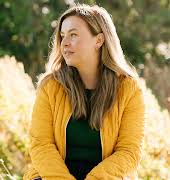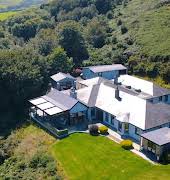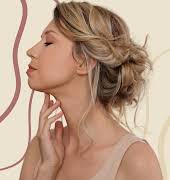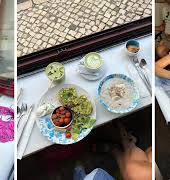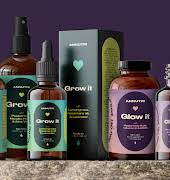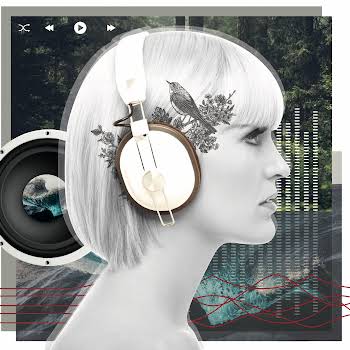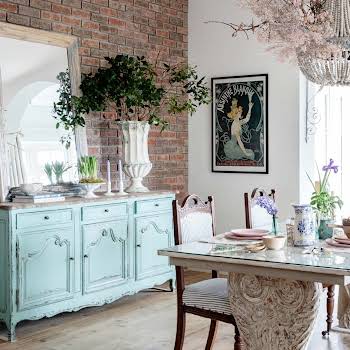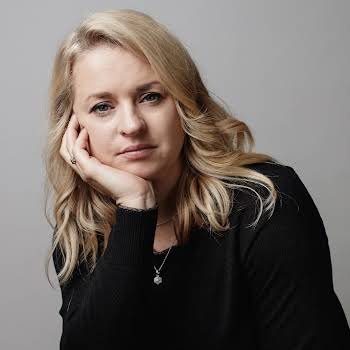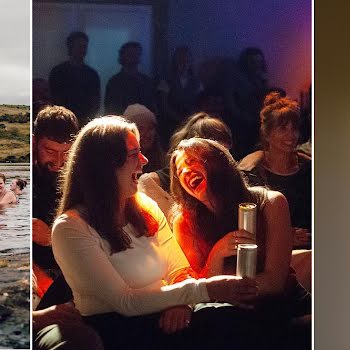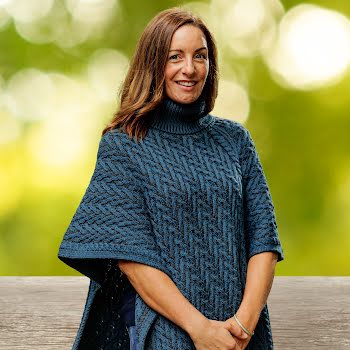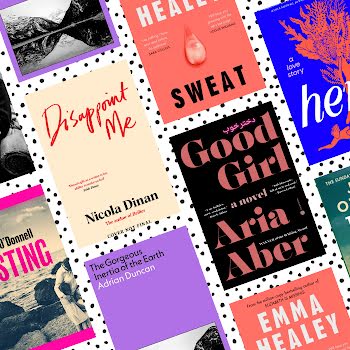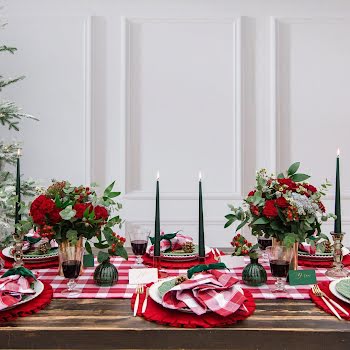
They inspire fashion designers, scientists, chefs and foragers, and we are only just beginning to unravel the magic of mushrooms.
Words by Cliodhna Prendergast
Photography by Andrea Gentl and Cliodhna Prendergast
To enter a quiet forest, gaze up and up to the tops of the trees, moving against the sky, inhaling their beauty and sound as they translate the wind, evokes a sense of wonder and peace. Though calm and tranquil, we become aware of the vibrant life forces all around us, so that we can sense the pulse of nature in the earth, trees, mosses, and the myriad life that comprise this earth. It’s at these times one gets a feeling that perhaps another entity is overseeing matters, looking after us in ways we cannot even imagine. It can be almost spiritual, the sense that this woodland is in fact one large entity, many limbed and covering vast areas, yet functioning as a unit. Until recently, we had very little understanding of the communities that trees have created, an understanding clearly grasped in ancient times by those that lived as part of that community.
A fungi revolution
Turning our heads to look down to roots and the forest floor, we discover where the real magic happens. Amid the wood sorrel and moss and the ferns and the crunchy autumn leaves, you can find spore-puffing puffballs, frilly golden girolles, scaly parasols, spiky hedgehogs, saffron caps, scarlet fly agaric, turkey tails and inky black trumpet – mesmerising names for the enchanted world of mushrooms, masters of the woodland.
There is something of a fungi revolution underway, and it is spurred by the twin disciplines of food foragers and scientists. The world feels like it’s in a spin with new and exciting scientific research emerging. It turns out that we owe much of our existence – and possibly all life’s existence – to the curious, flamboyant, mysterious genius that is the mushroom.
Recent mind-blowing documentaries such as Fantastic Fungi largely featuring American microbiologist Paul Stamets, and Michael Pollan’s How to Change Your Mind, both on Netflix, have helped bring the intriguing world and properties of mushrooms to a wider audience, generating huge interest.
Similarly, The New York Times bestseller, Entangled Life by biologist Merlin Sheldrake (Vintage, €15.40) will have you hooked from the introduction. Merlin Sheldrake, a name befitting this magic book, has dedicated his life to the study of fungi and writes beautifully, lovingly and most intriguingly about this mystical world. He describes how mushrooms change our perspective on human life and how they make us reconsider our place in the world as superior beings.
Entangled Life even inspired the avant-garde fashion designer Iris van Herpen to create a collection based on the fascinating forms and flourishes of mushrooms. Gowns with ethereal folds and delicate curls paraded the spring 2021 runway. Fungi are a kingdom of their own, one that has the intelligence to communicate, seek out food and solve problems, create plant life, and live inside and all around human beings; we live and breathe fungi every day. It is in the hunting of them that, for many, the greatest pleasure lies.
Sometimes it is hard to focus in on mushrooms, as they are often camouflaged in their environment, like the winter chanterelles that have the same colours as the leaves that have dropped to the ground. Once you spot one, however, you often realise you are standing in a sea of chanterelles which went unnoticed. Others seek the limelight and stand proud with lurid colours like the violent violet of amethyst deceivers, delicately peeking through green moss.

For food, for foraging – and more?
Human beings have long been eating mushrooms. How and when we found out which were edible is a bit of a mystery, possibly from observing animals; perhaps it was our own curiosity and instinct and a lot of trial and error that guided us. Today, many know what is edible and what is not, especially in their local areas.
Nonetheless, without the knowledge, it is a risky business – a walk with a professional forager is guaranteed to be informative, enjoyable, and possibly lifesaving.
Cooking with Mushrooms by Andrea Gentl (Artisan Books, approximately €28) is a book that will help you realise the culinary potential of all sorts of fabulous mushrooms. One-half of respected New York photography duo Gentl and Hyers, Andrea and her husband Marty have photographed for a plethora of cookbooks, including Julia Child’s Baking with Julia, as well as titles like Bon Appe?tit magazine, Conde? Nast Traveler and Kinfolk.
Andrea spent her childhood tramping through the wilds of western Massachusetts on her family’s small farm, gathering and foraging and collecting bits and pieces. This bucolic childhood has fostered within her a deep and strong connection with nature. “I have always been a bit obsessed with mushrooms,” she says. “I drew them constantly as a kid. Later, in my twenties, I came to love them even more through my work. I am captivated by their beauty in nature and food, and mushrooms have been my constant muse.”
Travelling for work brought her to top chefs and food lovers all over the world and in doing so reignited her love for the wild, foraging, and particularly mushroom hunting. Gentl soaked up the knowledge of these people and places and gathered ingredients to bring home to work with and recreate dishes for family and friends.
From powders, butters and infused spirits to broths, main dishes and even sweet treats, Cooking with Mushrooms is soulful, practical, poetic and essential to anyone wishing to learn more about culinary mushrooms and unlocking their magic umami. (Explore a recipe from the book below.)
Aside from the delicious dishes and flavourings created by Gentl, it is the other effects of consuming mushrooms which is causing the greatest excitement: the medical science community is applying considerable resources to the study of fungi.
Husband and wife team Dr Lucy Deegan, PhD, and food scientist Mark Cribbin are highly qualified scientists, mushroom growers and foragers who have carried out extensive research in this area. What started as a hobby grew into Ballyhoura Mountain Mushrooms, a vibrant and much valued business that sees them cultivating mushrooms at their farm in Co Limerick to supply the catering industry.
They now offer a host of products including condiments, dried mushrooms, fresh cultivated and wild mushrooms as well as incredible mushroom powders with which to infuse your home cooking with great umami flavour. They have won numerous accolades, from Great Taste awards to a very prestigious Euro-Toques Producer award in 2014. But possibly even more importantly, with their impeccable credentials, they have researched and now produce medicinal mushroom supplements, extracts and teas in house.
“Mushrooms are the only non-animal stable source of vitamin D, whose role in immune response has been highlighted in the Covid pandemic and is required for bone development and health via its role in calcium absorption,” explains Mark. “This is especially true for vegetarians and those of us living in northern latitudes who are typically vitamin D deficient in the winter months. Mushroom extracts such as PSK from turkey tail are used as adjuncts to conventional cancer treatment in Japan, while anti-cholesterol extracts produced from oyster mushrooms have been licensed by the FDA in the United States.”
Medicinal use of mushrooms continues to grow; many mushrooms are known adaptogens – the applications for their use is extensive.
It’s a kind of magic (mushroom)
There is, of course, the use of magic mushrooms to consider. Although their use is illegal in Ireland, research is being carried out into the use of psilocybin, the main hallucinogenic property found in magic mushrooms, to alleviate depression and anxiety. A four-year trial has just concluded assessing the effectiveness of psilocybin therapy on people with treatment- resistant depression. Dr John Kelly, clinical lecturer in psychiatry at TCD and psychiatrist at Tallaght University Hospital, was a lead researcher for the Dublin part of a larger study of 233 people in North America and Europe, the results of which are due to be published very soon.
“We hope this will become a useful treatment strategy for many people with certain non-psychotic mental health disorders,” explains John. “It is not going to be useful for everybody – we must be very careful not to repeat the mistakes of the past, which set research back to a huge degree. The use of psilocybin could end very badly for a vulnerable person or if taken with no preparation in a non-supportive environment.”
There has also been a growing interest in “microdosing”, the scheduled intake of tiny levels of psilocybin over a set period without achieving a high. There is still little known scientific evidence to support this, as its legal status has inhibited research, and so the long-term effects are not yet known. Anecdotally, some have reported notable beneficial effects (while skeptics say it’s the placebo effect at work).
My acquaintance, a businesswoman and mother who accessed several courses of psilocybin for microdosing, noted initial feelings of joy, then heart opening, then a greater sense of tolerance and acceptance, which obviously makes it very attractive. Hopefully, more support will be made available to continue research in this fascinating area.
Meanwhile, we continue to enjoy the adventure of foraging and the added dimension our harvest brings to our kitchens as the research continues. One cannot but get the sense that this world of mushrooms has as much to reveal as outer space or deep sea exploration.


MARY BULFIN, AKA WILD FOOD MARY, is a hugely reputable forager who runs bespoke foraging events. wildfoodmary.com
Howth-based NICOLE DUNNE hosts pop-up foraging tours in woodlands, meadows and seashores in and around Dublin. howth-foraging.business.site
EDWARD AND AVERY of Thalli Foods host foraging walks, sell products and very interestingly offer mentorship programmes for people who would like to delve into the world of foraging in a more serious way. thallifoods.com
BALLYHOURA MUSHROOMS runs foraging events and consultancy while its large range of products are available online. ballyhouramushrooms.ie
Keep an eye out for announcements from WILLIAM AND AISLING O’CALLAGHAN from Longueville House in Mallow, Co Cork, who host an annual autumnal mushroom foraging day followed by dinner. longuevillehouse.ie
FEEBIE THE FORAGER organises foraging walks in Dublin for people to find out what is in their local area. forager.ie
MICEAL MURRAY takes people for plant foraging walks for those interested in what grows in Dublin City. takingaleaf.com


À la grecque, a French culinary term meaning “Greek style”, is a quick way to cook vegetables by braising them in a flavourful vinaigrette, which slightly pickles them.
INGREDIENTS
• 1 tsp coriander seeds • 1 head garlic, halved horizontally • 240ml red wine vinegar or apple cider vinegar • 60ml unseasoned rice vinegar • 2 tbsp honey • 1 shallot, thinly sliced lengthwise • 240ml wine (orange, white or rosé) • finely grated zest and juice of 3 lemons, preferably organic • 120ml extra-virgin olive oil • 10 to 12 saffron threads • 1 chile de árbol, crushed • 1 large bay leaf • 1 tbsp Himalayan pink salt • 455g cremini mushrooms (or any other variety), trimmed and quartered • 8 fresh oregano sprigs, leaves picked
METHOD
1 In a small cast-iron skillet over low heat, toast the coriander seeds until fragrant, about 1 minute. Remove from the pan and crush slightly with the side of a chef’s knife. 2 In a non-reactive medium pot, combine the crushed coriander, garlic, both vinegars, the honey, shallot, wine, lemon zest, lemon juice, oil, saffron, chile, bay leaf and salt. Bring to a bare simmer over medium-low heat. 3 Toss in the mushrooms and oregano, reduce the heat, and simmer until the mushrooms are soft, about 10 minutes. Remove from the heat and let the mixture cool completely in the liquid.4 Transfer to a glass jar with a lid. Cover and store in the refrigerator for up to 1 week.
This article originally appeared in the Autumn 2023 issue of IMAGE Magazine.

